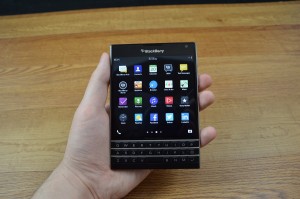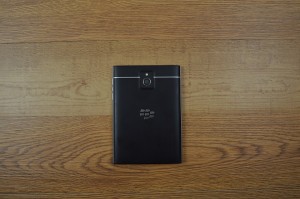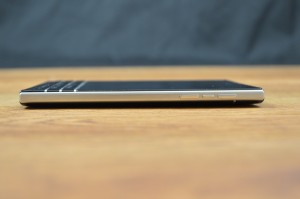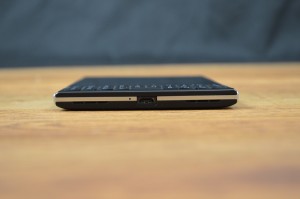Most smartphones these days are more or less identical at first glance: a rectangular slab, the entire front of which is taken up by a screen, and maybe one physical key. The major differences don’t become apparent until you actually turn a phone on.
But with the Passport, BlackBerry is looking to make a bold impression the moment you set your eyes on its new flagship. Featuring an unorthodox square display and a trimmed down physical QWERTY keyboard, there’s no denying that the Passport is unlike anything else out there.
The question is, does different necessarily mean better? Let’s find out how well BlackBerry’s unique creation holds up.
Build and Design
Put simply, the Passport’s design is inconvenient. The phone is built around its awkwardly shaped display, giving it a footprint that is entirely too wide. While one can maybe appreciate BlackBerry’s efforts to think outside the box, it’s all for naught if it doesn’t present any benefits to the user, which is the case here.
BlackBerry tries to make the case that the display provides a better viewing and reading experience, but the fact is that most media these days is either presented in a vertical layout or a true, 16:9 widescreen format – for which users can simply turn their phones sideways and reorient the content. Therefore, you rarely ever find yourself in a situation where you need a screen like this (i.e. one that’s wider than average, but presented as a perfect square “full screen” instead of an actual 16:9 widescreen).
Instead, all you’re left with is a fat-faced phone that, more often than not, needs to be handled with two hands instead of one. Its 5.04” x 3.56” x 0.36” body is also entirely too awkward to comfortably fit in your pocket, so the best bet is to carry it in a bag.
That said, the actual quality of the Passport’s build is great. It’s fairly thin, and though it’s a little heavy at 6.91 ounces (196 grams), it does lend the phone a nice, solid feel. The back features a rubberized coating that offers a little bit of grip — though it is a fingerprint magnet — and the metallic accents along the edges and in between the rows of keys bring a high quality aesthetic to the device.
Save for the physical QWERTY keyboard below the display, the layout of the phone is ordinary. The power/standby button can be found on the top edge along with the headphone jack, while BlackBerry’s three-button volume rocker plus mute/pause button can be found on the right. The left edge is devoid of any buttons or ports, while the bottom features two speakers (which can really scream) as well as a microUSB charging port. The cameras are also where you’d expect them to be, with the front-facing shooter in the top right corner of the device, and the rear one in the top center of the back.
Unfortunately, the phone doesn’t feature a removable battery, but there is a small segment of the back panel that can be pried off to provide access to the nano SIM slot and a micro SD expansion port.
Display
Despite its bizarre proportions, the quality of the Passport’s 4.5-inch display is excellent. With a resolution of 1440 x 1440 and a pixel density of 452 ppi, images and, perhaps more importantly for such a work-oriented device, text look extremely sharp. Colors aren’t the most vivid we’ve ever seen, but they pop enough to satisfy considering that the primary function of this device isn’t media consumption. The display doesn’t fight glare especially well, but its maximum brightness is impressive enough to help mitigate the issue somewhat.
As we established when discussing the build, the shape of the screen is mostly pointless. You could maybe understand BlackBerry’s argument that a wide square display offers a decent setup for reading documents, but it’s far from a necessity given our earlier point about being able to turn a traditionally-shaped smartphone sideways for a widescreen format. It’s worth pointing out, though, that unless you’re viewing a graph or maybe a slideshow, most documents are typically vertically oriented anyway, so the traditional smartphone display is still a better fit.
Beyond that, there really isn’t much of a case you can make for such an oddly shaped display, as all it does is make it more difficult to tap things on the far side of the screen. It’s especially unpleasant for viewing videos because the vast majority of them are presented in a widescreen format nowadays. Have you ever tried watching a widescreen 16:9 ratio movie on a standard 4:3 ratio television? It’s basically like that.
The post BlackBerry Passport Review: Be Square appeared first on Brighthand.com.



